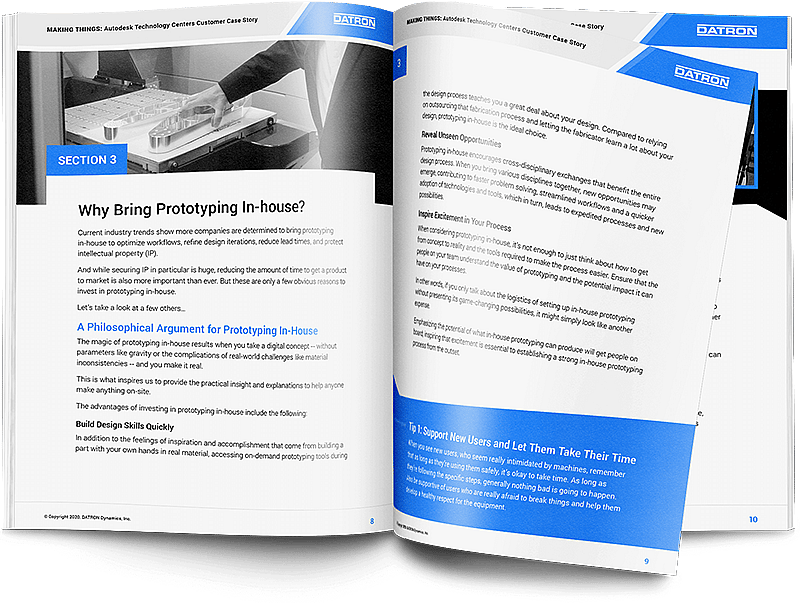About Motodemic
Motodemic is primarily in the business of upgrading and modifying motorcycle headlights. The company began by designing and 3D printing parts but has now expanded that to metal prototypes and parts. Much of their work is centered around attaching or converting motorcycle headlights to more modern lights that are safer for the rider.
Motodemic: What They’re Doing with DATRON
Motodemic makes parts mainly out of 6061 aluminum and Delrin, that range from small brackets to large adapter rings which allow aftermarket lights to drop directly into the factory light housing. These parts range between intricate pieces that measure an inch by an inch, all the way up to large adapter rings that measure eight inches in diameter.
When the company first started, Motodemic was sending out parts for prototyping almost weekly at a cost of anywhere from $300 to $1,000, which is a lot to invest when determining if a sub-$100 part is viable.
Time was a key factor for Motodemic. To move quickly in initial product development, they needed to turn prototypes around quickly and outsourcing could be costly, or take longer than they wanted. Often, if they needed something within a week, it could cost them three times the typical fee. Otherwise, they were waiting for as long as three weeks depending on how busy the outsourced prototyping partner was.
In addition, there was a matter of “right amount of effort and finish.” Sometimes Motodemic wanted to get physical feedback on whether their concepts worked the way they designed them. Even when they communicated to their outsourced prototyping partner that a part doesn’t need to be finished quality—just needs to be functional—the partner would often still spend all the time and effort to produce a “finished” quality part. There was little to no capacity for rough design checks. This would add significant time to market, since each of these iterations could take two to three weeks—or more. Those weeks started to add up in time and cost.
“I saw the neo at IMTS in 2018, and thought, ‘Wow, that’s really cool. The speed.’ I was noticing the speed, but I was also noticing there was no coolant everywhere”
Brad Wood (Founder, Motodemic)
When Motodemic got to the point in their business where they wanted to significantly elevate the quality of their products, they started to look at bringing prototyping in-house. At the time, their designs were too expensive to go through the standard outsourced prototyping and production process. So they started looking at equipment.
The key here was that they didn’t want to become a machine shop. They had positive experience with 3D printing, and they wanted something that was as close in experience as they could find with that—but be able to work with real metals. They also didn’t want a big traditional machine in their clean environment, nor did they want to hire a full-time machinist. They wanted something to work metal on that was high-end, could do fine and detailed work, and that their team could jump in and use with minimal training.
Motodemic quickly found the DATRON neo, and were wowed by the speed, the touchscreen, the Fusion 360 integration, and small footprint. It fit what they were looking for perfectly.
“DATRON is more technology-forward on their control system. The next controller on my neo is the same controller they use on their super high-end model, which gives me confidence that when we’re ready to move up to an M8Cube, their next model up, there’s really not going to be a learning curve, because it’s basically the same machine, just bigger.”
Brad Wood (Founder, Motodemic)
Bringing prototyping in-house allows them to control practically every aspect of their workflow. When Motodemic wants a rough proof of concept, they can make that, without investing in the time or expense an outsourced partner would add to it. And the cost savings isn’t just in the one-time prototype cost, it’s the fact that they aren’t spending that money on something they believe should work—but won’t. Motodemic can iterate—and innovate—faster, because they aren’t constrained by time or cost associated with outsourcing anymore.
And they can do this quickly and easily with the touchscreen interface, and without the mess associated with traditional machine coolant.


